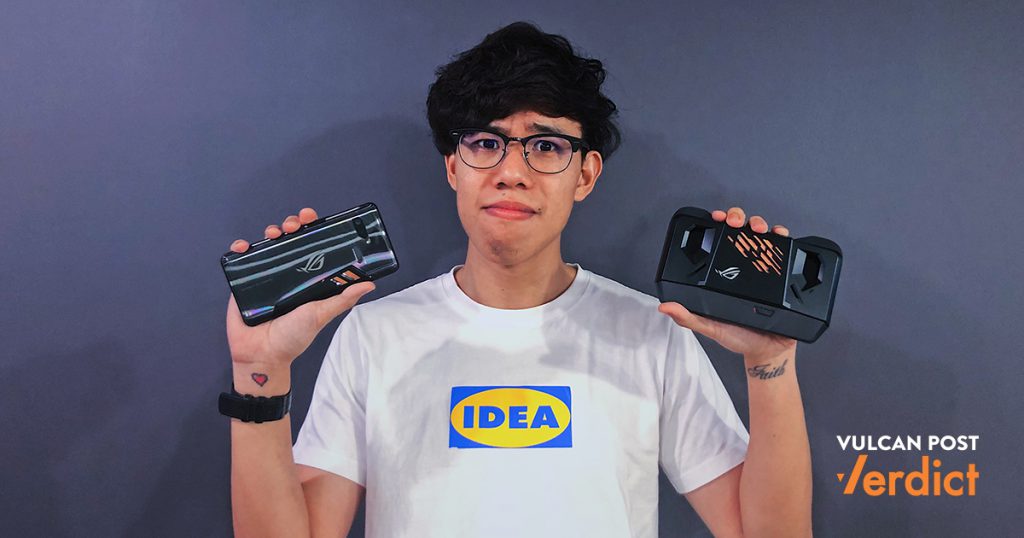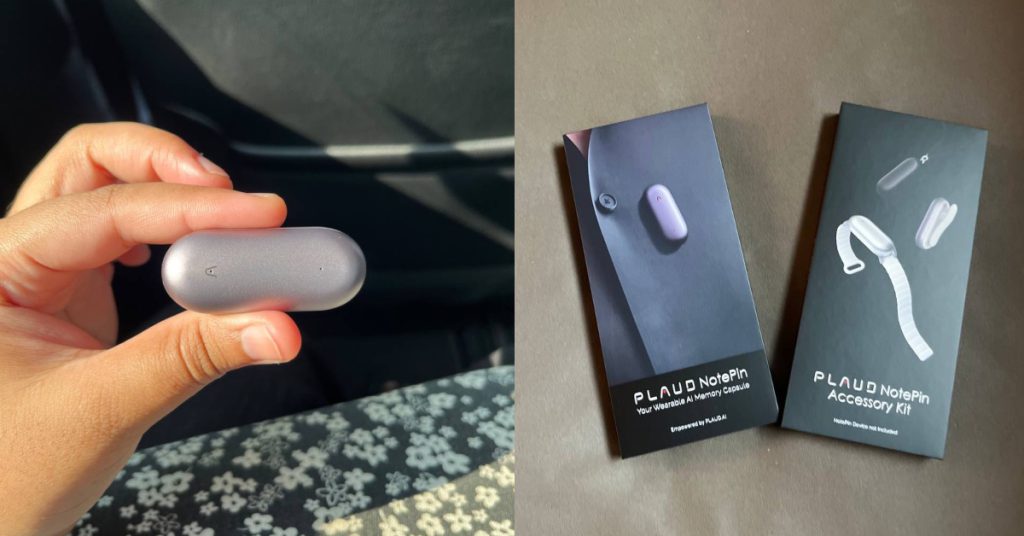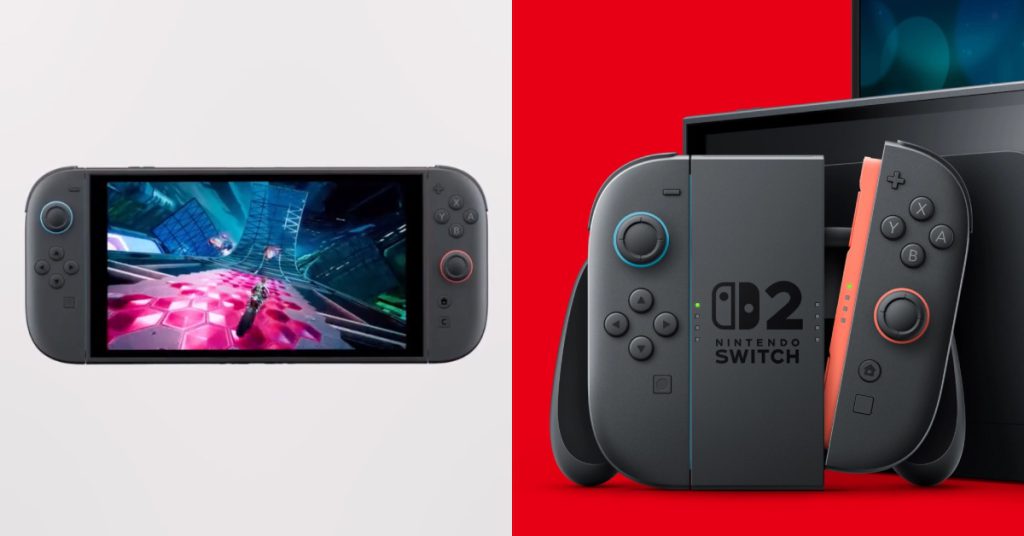Last month, I quite literally played around with the Razer Phone 2, a gaming phone that — as the moniker suggests — was less of a traditional smartphone and more of a mobile gaming device that could take calls.
The Razer Phone 2 isn’t the only gaming phone on the market, though.
The folks over at ASUS — well known for their Republic of Gamers (ROG) line of gamer-centric products — have leveraged on their expertise in the field to develop a gaming phone of their own.
Fittingly dubbed the ROG Phone, the phone has a few tricks up its sleeves to set it apart from the competition, but is that enough to make it a worthy player in the gaming phone arena?
Do You Even Game, Bro?

While the Razer Phone 2’s aesthetics could still pass off as a regular phone, the ROG Phone is unapologetically “gamer” in its design — orange accents surround the two front speakers, while the back of the phone is covered in arbitrary lines that scream “Yes, I really like Mobile Legends”.
Needless to say, it’s a rather divisive design – on one hand it’s a breath of fresh air, but your mileage will vary depending on how proud you are to wear that gamer badge.
Functionality-wise, the fingerprint sensor at the back of the phone feels downright rudimentary when compared to phones with in-display sensors like the Huawei P30 and Samsung Galaxy S10, and placing the volume and lock buttons on the same side definitely takes some getting used to. (I’ve lost count of the number of times that I accidentally locked my phone when trying to adjust the volume).
These design choices aren’t without reason, though.
The left side of the phone is reserved for a port that connects to its many accessories (we’ll get to that later), along with a second USB-C port for easier charging when playing games in landscape mode. The “Aerodynamic system“ at the back also functions as an actual vent, funnelling air to keep the phone cool.
On the inside, the ROG Phone is equipped with an overclocked SnapDragon 845 processor, 8GB of DDR4X RAM and an above-average 4,000 mAH battery for long gaming sessions. As far as general use goes, it performs as well as you’d expect a modern smartphone to.
Literal Game Changers

Of course, anyone considering the ROG Phone isn’t buying it for its performance as a smartphone, and will be more concerned about the phone’s mobile gaming capabilities instead.
Like the Razer Phone 2’s “Game Booster”, the ROG has a “Game Center” that allows you to create gaming profiles and monitor specs like temperature, memory and storage.
The Game Center also allows you to activate something called “X Mode”, which optimises the phone for maximum gaming efficiency.
In my experience, X Mode did provide a performance upgrade, though it burns through the battery faster as well.

Another point of comparison between the two phones is display – the Razer Phone 2 comes with an LCD screen with a 120hz refresh rate, while the ROG Phone has an AMOLED screen with a 90hz refresh rate. This means that the ROG Phone’s graphics are slightly less smooth, but has more vivid colours thanks to that AMOLED screen.
It’s a worthy trade-off, in my opinion.
Probably the most game-changing (pun fully intended) feature of the ROG Phone is something ASUS is calling “Air Triggers”, haptic sensors that allow users to squeeze the sides of the phone to utilise them as shoulder buttons. It’s an intelligent design choice, and one that I found myself using more than thought I would.
Peripheral Heaven
While the ROG Phone is more than capable of gaming on its own, another big selling point is its extensive, almost gratuitous catalogue of accessories.
From controller attachments to secondary screens, this is probably the largest collection of peripherals made for a single phone.
There’s a lot to unpack here, so here’s a quick rundown of every accessory available:

AeroActive Cooler (Free): Included free with the phone, the AeroActive Cooler is basically a small fan that provides additional cooling to prevent the phone from running hot. It also comes with its own USB-C and 3.5mm ports, which allow you to connect headphones and charge the phone in a much more comfortable position.

Gamevice (S$139): Probably the most useful accessory of the lot, the Gamevice greatly enhances your mobile gaming experience by giving you a full set of physical buttons. From a D-pad to analog sticks to bumper buttons, playing PUBG Mobile with this could almost be considered cheating.

TwinView Dock (S$399): The TwinView Dock gives you an independent second screen that’s only limited by your imagination. Want to open up a guide and check your Instagram feed while playing a game, or even play two games at once? Now you can, with an additional 6,000 mAh of battery for good measure.

WiGig Display Dock (S$339): If the ROG Phone’s 6-inch display is too small for you, the WiGig Display Dock allows you to wirelessly stream your content onto a larger screen. If a bigger viewing angle is all you’re looking for, then this is the most convenient solution.

Mobile Desktop Dock (S$199): The Mobile Desktop Dock takes the “mobile” out of mobile gaming, and is the closest thing to turning the ROG Phone into an actual PC. On top of HDMI and DisplayPort connectivity you also have four USB 3.1 ports for a mouse and keyboard, and even an ethernet port for more stable Internet connectivity.

Professional Dock ($139): Yet another display-related accessory, the Professional Dock is the smallest of the three. It only has the bare essentials to connect a display, mouse and keyboard, but its compact size makes it perfect for travellers who need a portable solution.
The Verdict

Personally, I’ve never been particularly invested in the mobile gaming scene — I’d rather do my on-the-go gaming on a dedicated device like the Nintendo Switch, and never want the reason for my phone’s battery running out to be “an intense round of Clash of Clans”.
If I ever were to get into mobile gaming, however, the ASUS ROG Phone would probably be my weapon of choice. Unique features like the Air Trigger put the phone in a class of its own, and the extensive selection of accessories fulfils virtually every need that a gamer might have.
One thing to consider, however, is the ROG Phone’s price tag — at S$1,598 it’s more expensive than a Huawei P30 Pro or Samsung S10+, both of which are S$200 cheaper at S$1,398 (and we’re not even talking about the rather pricey accessories on top of that).
Objectively speaking, this means that you can get a better phone for a cheaper price, but if mobile gaming is your top priority then it truly doesn’t get any better than this.
VP Verdict is a series where we personally try and test out products, services, fads, and apps. Want to suggest something else for us to try? Leave a comment here or send the suggestion into our Facebook page.
Also Read: From $139 To $2,390 – Which Speaker Will You Choose To Jazz Up Your Space?















